Yoga Blog
Best Hydrating Foods to Fuel Your Yoga Practice
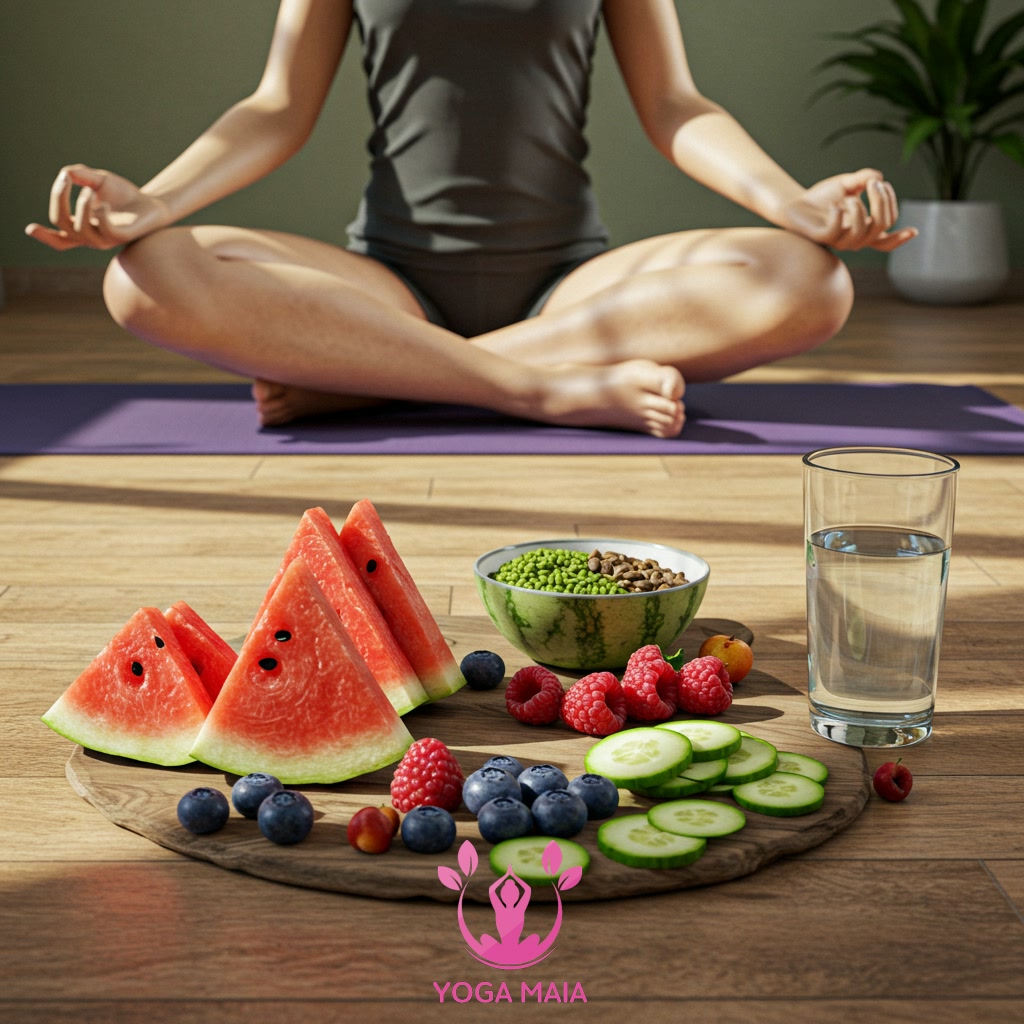
Staying properly hydrated is crucial for an effective yoga practice. While water is essential, incorporating certain hydrating foods can provide additional benefits. This content identifies and discusses the best foods to eat to support hydration and optimize your performance on the mat. By choosing these nourishing options, you can fuel your body for improved flexibility, endurance, and recovery during and after yoga.
Table of Contents
- Section 1: The Importance of Hydration for Your Yoga Practice
- Section 2: Beyond Water: Why Hydrating Foods Matter for Yoga
- Section 3: Top Hydrating Fruits and Vegetables for Yoga Fuel
- Section 4: Incorporating Hydrating Foods into Your Pre- and Post-Yoga Routine
- Section 5: Creating a Hydration-Focused Diet for Optimal Yoga Performance
Section 1: The Importance of Hydration for Your Yoga Practice
Proper hydration is a cornerstone of an effective and enjoyable yoga practice. When your body is adequately hydrated, your muscles maintain better elasticity and flexibility, which is crucial for holding poses and moving smoothly through transitions. Hydration also supports joint lubrication, reducing stiffness and discomfort during stretches and movements. Furthermore, staying hydrated helps regulate your body temperature, preventing overheating during more dynamic sequences. It also plays a vital role in transporting nutrients and oxygen to your cells, boosting energy levels and reducing fatigue, allowing you to sustain focus and endurance throughout your session. Simply put, a well-hydrated body performs better, feels more comfortable, and recovers more efficiently, enhancing every aspect of your time on the mat.
 The Importance of Hydration for Your Yoga Practice
The Importance of Hydration for Your Yoga Practice
Section 2: Beyond Water: Why Hydrating Foods Matter for Yoga
While plain water is the foundation of hydration, incorporating hydrating foods takes your preparation for yoga a step further. Many fruits and vegetables boast exceptionally high water content, often exceeding 80% or even 90%. But their benefits extend beyond simple fluid intake. These foods are packed with essential electrolytes like potassium and magnesium, which are crucial for maintaining fluid balance within cells and supporting optimal muscle and nerve function—vital for holding poses and transitioning smoothly. Furthermore, the vitamins, antioxidants, and fiber found in these foods contribute to overall health, energy levels, and reduced inflammation, all of which enhance your ability to engage fully and comfortably in your yoga practice and aid in post-practice recovery. Thinking ‘beyond water’ means leveraging these nutrient-rich sources for deeper, more complete hydration.
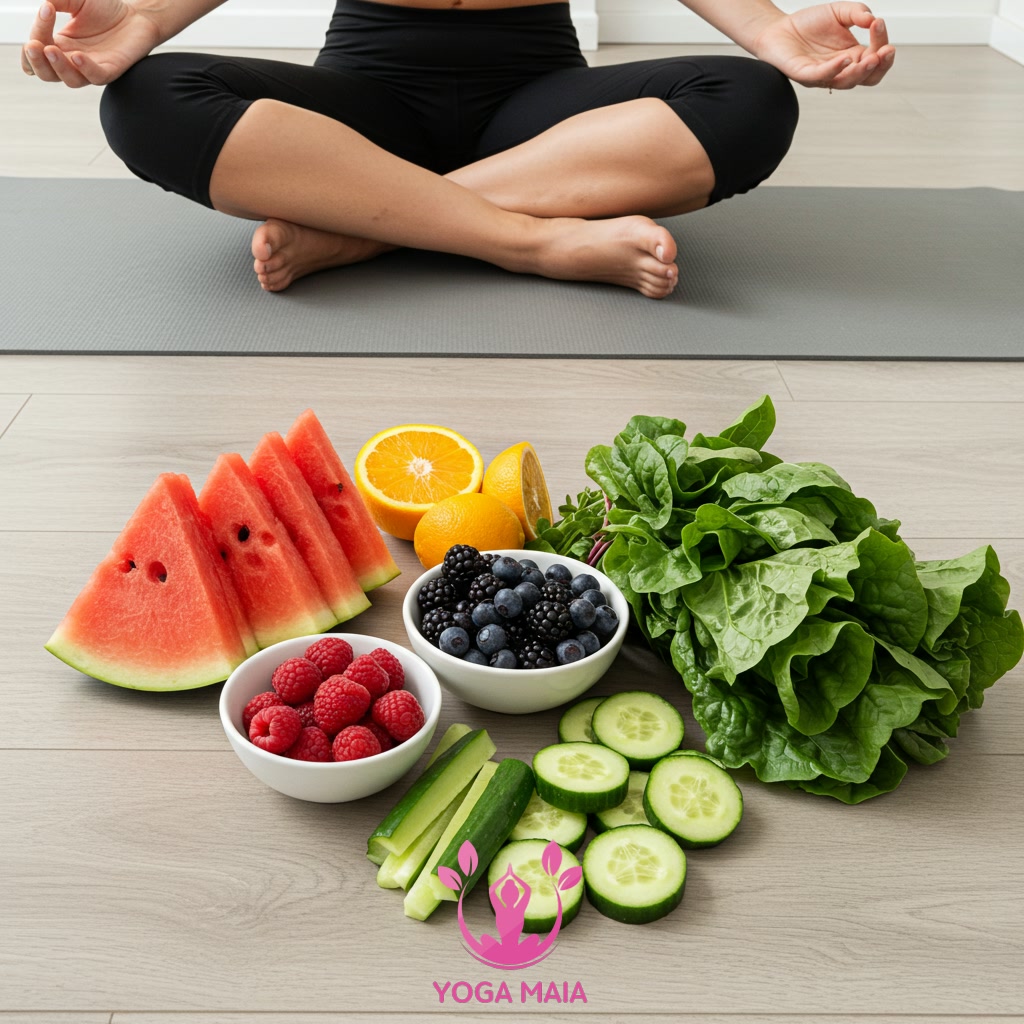 Beyond Water: Why Hydrating Foods Matter for Yoga
Beyond Water: Why Hydrating Foods Matter for Yoga
Section 3: Top Hydrating Fruits and Vegetables for Yoga Fuel
Building upon the foundation of water intake, incorporating specific fruits and vegetables is a powerful way to enhance hydration for your yoga practice. Many common produce items are exceptionally high in water content, often exceeding 85-90%. Think of juicy options like watermelon, strawberries, cantaloupe, and oranges, which not only provide liquid but also beneficial vitamins and natural sugars for energy. Cucumber, celery, bell peppers, and leafy greens such as spinach and lettuce are also fantastic choices, offering significant hydration along with electrolytes and fiber. These foods contribute to overall fluid balance, support muscle function, and can aid in recovery, making them ideal snacks or additions to meals before or after hitting the mat.
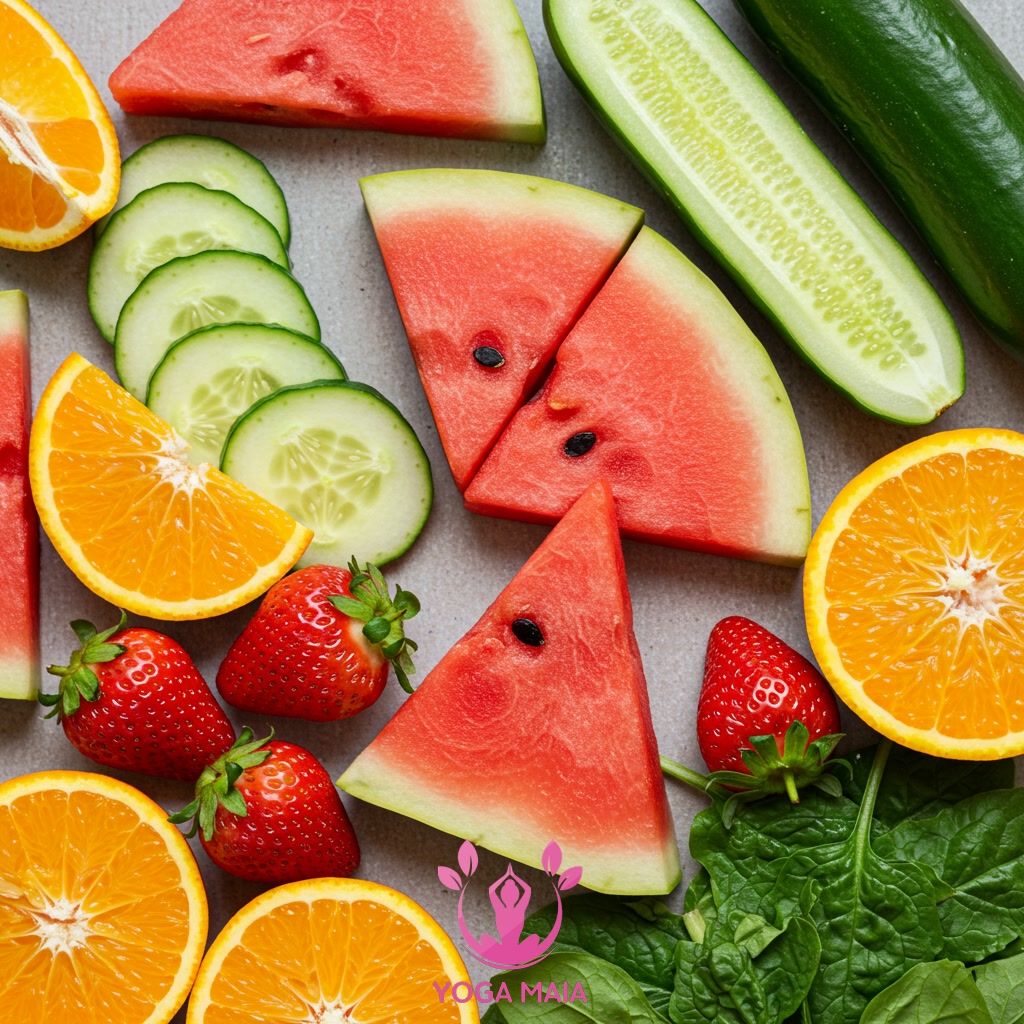 Top Hydrating Fruits and Vegetables for Yoga Fuel
Top Hydrating Fruits and Vegetables for Yoga Fuel
Section 4: Incorporating Hydrating Foods into Your Pre- and Post-Yoga Routine
Building on the understanding that fruits and vegetables are excellent sources of hydration, strategically incorporating them around your yoga practice is key. Eating a small portion of hydrating fruits like watermelon or berries about an hour before your session can provide readily available energy and fluid without feeling heavy. This helps prepare your body for movement. After completing your practice, replenishing lost fluids and nutrients is vital for recovery. A smoothie made with hydrating greens and fruits, or simply snacking on cucumber slices or an orange, helps restore balance, aids muscle recovery, and continues the hydration process. The timing and type of food should align with your personal comfort and the intensity of your practice, ensuring you feel light and energized, not weighed down.
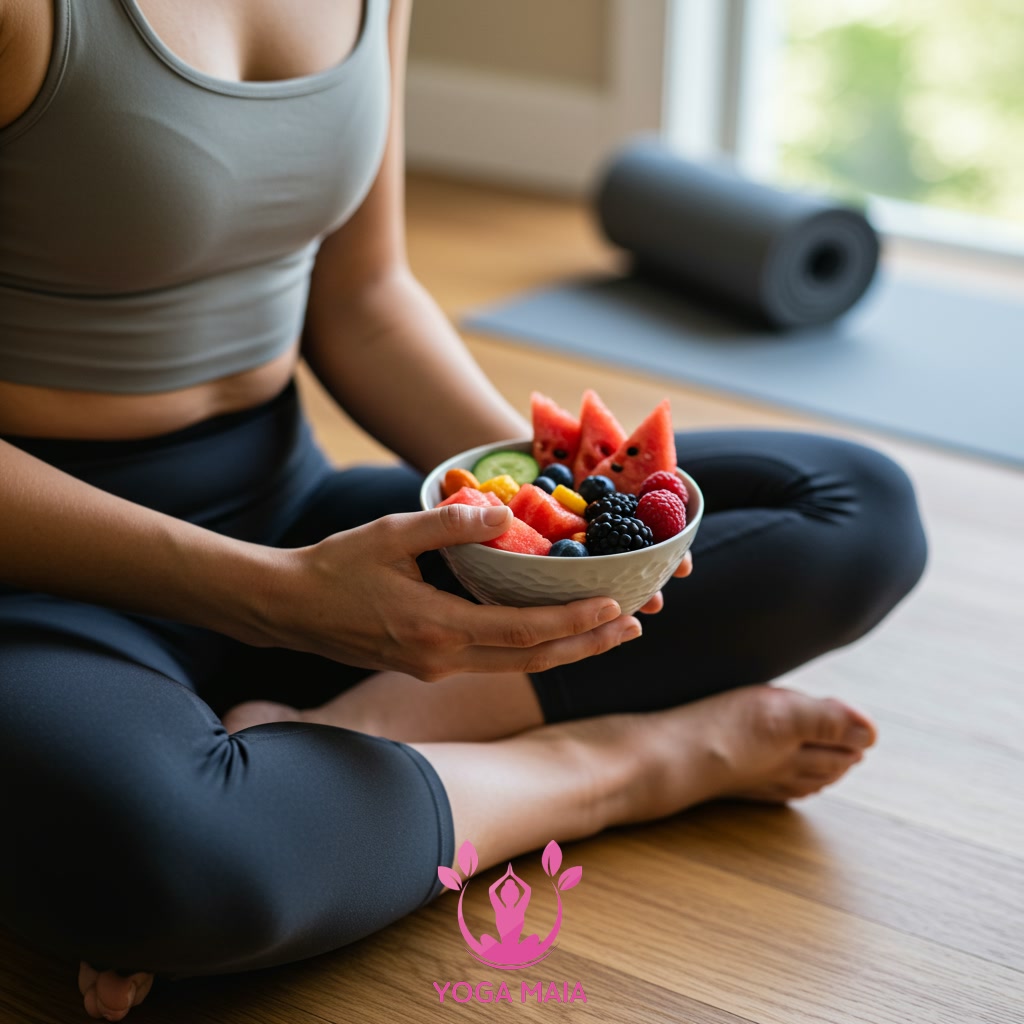 Incorporating Hydrating Foods into Your Pre- and Post-Yoga Routine
Incorporating Hydrating Foods into Your Pre- and Post-Yoga Routine
Section 5: Creating a Hydration-Focused Diet for Optimal Yoga Performance
Building on the understanding that fruits and vegetables are excellent sources of hydration, strategically incorporating them around your yoga practice is key. Eating a small portion of hydrating fruit, like watermelon or berries, about 30-60 minutes before practice can provide readily available fluids and energy without feeling heavy. Post-practice is crucial for replenishment; consider a smoothie blending spinach, cucumber, and hydrating fruits, or a salad rich in leafy greens, tomatoes, and bell peppers. Throughout the day, prioritize meals and snacks that naturally contain high water content. This consistent approach ensures your body is optimally hydrated, supporting flexibility, preventing muscle cramps, and aiding recovery, allowing you to fully engage with and benefit from your time on the mat.
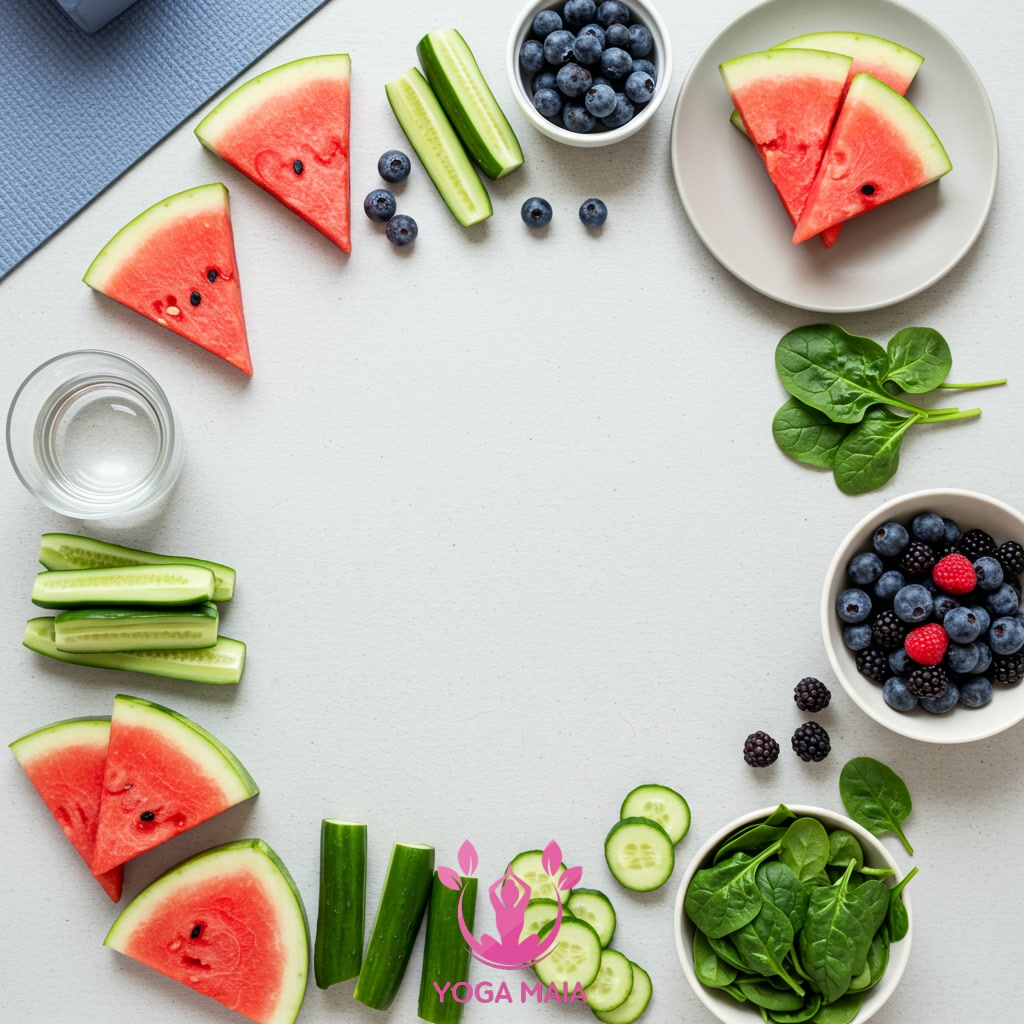 Creating a Hydration-Focused Diet for Optimal Yoga Performance
Creating a Hydration-Focused Diet for Optimal Yoga Performance












